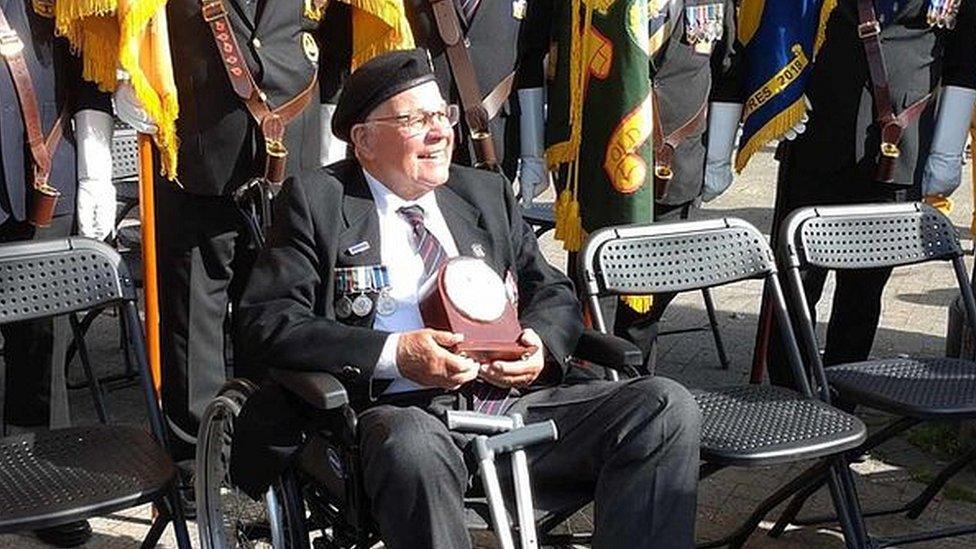Historian asks for help identifying WW1 soldiers in historic photo
- Published
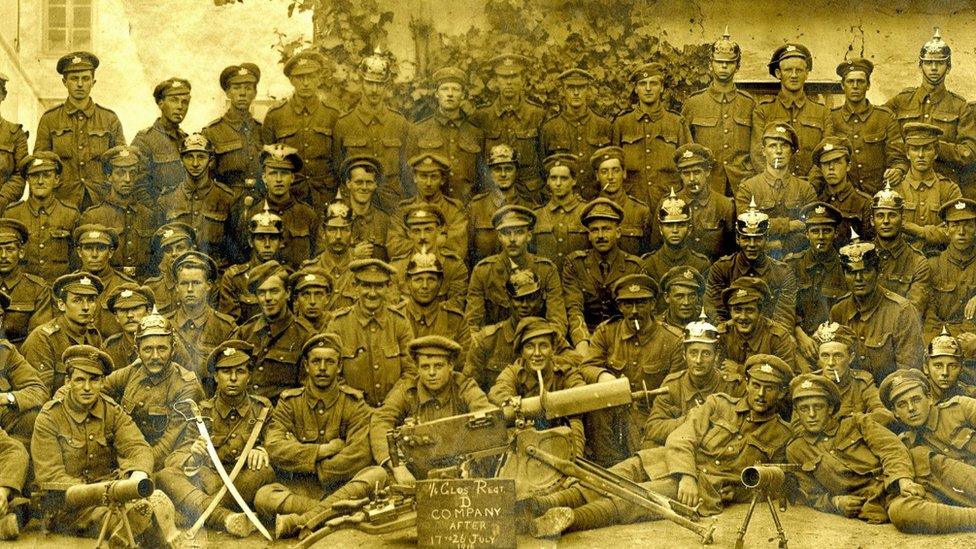
The photo was discovered in a family collection and the public are being asked to help find out the names of the WW1 soldiers
An amateur historian is asking for help identifying soldiers in a photograph from World War One, unearthed 40 years ago in a private collection.
The picture shows soldiers from D Company, 1/4th Battalion, The Gloucestershire Regiment, external who fought during the Battle of the Somme in 1916.
"They're all local men from the Bristol area," said Ian Chard, from Fishponds, who is a relative of one of the men.
"To know who they were would be tremendous," he said.
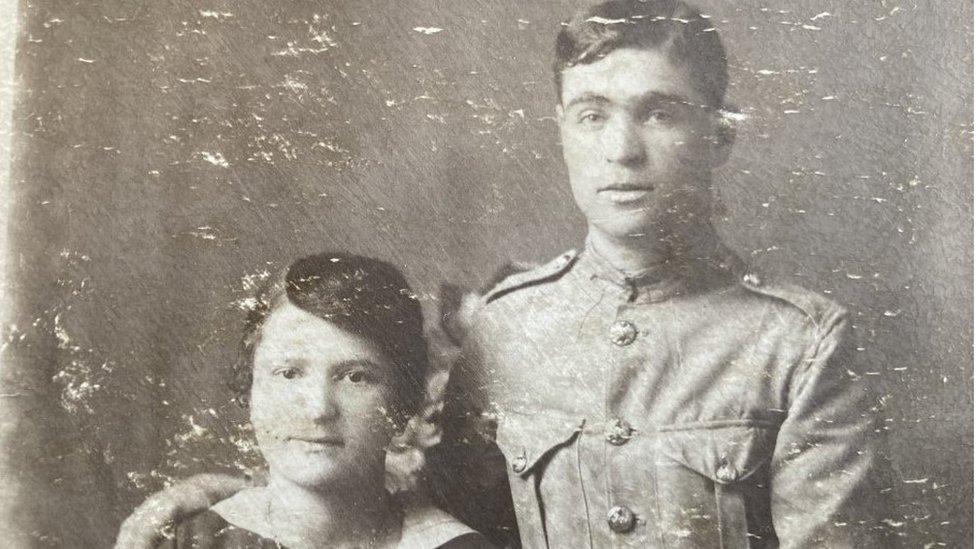
Sgt Bill Taylor married after the war and lived with his family in Easton, Bristol
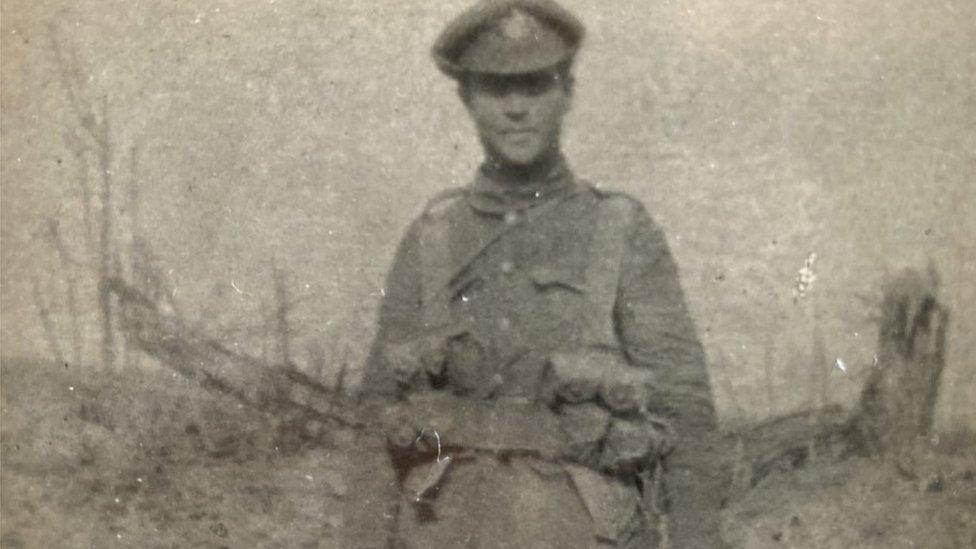
Sgt Bill Taylor served with the 1/4th Battalion, the Gloucestershire Regiment during the Battle of the Somme in the First World War
Mr Chard is distantly related by marriage to Sgt Bill Taylor, who married one of his great grandmother's children. He is keen to put more names to the faces in the picture.
"This photo came into my possession about 40 years ago and with the recent World War One memorials I decided to get it out and have a proper look."
Bill Taylor became the company sergeant major as the war progressed and was awarded the military medal.
He married after the war and lived with his family in Easton, Bristol.
Mr Chard is hoping people will come forward who may recognise someone; grandfathers, great grandfathers or great uncles, and give him some history about who the soldiers were and what happened to them.
"It was a typical territorial battalion and they would all have been Bristol men, or thereabouts. The names we have, we know they were born in Temple Meads, Westbury, Brislington, Old Sodbury; those sorts of places, so they're all local men," said Mr Chard.
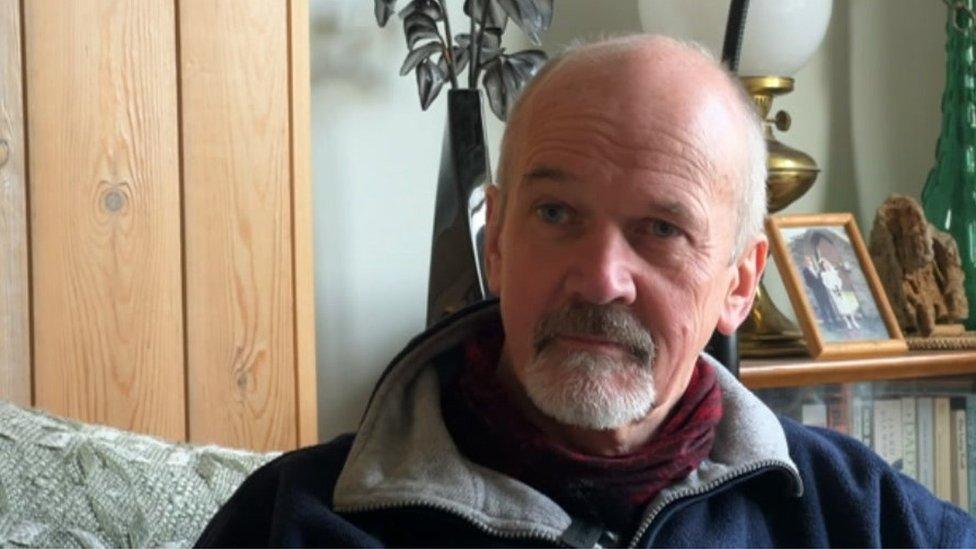
Ian Chard is a distant relative of Sgt Bill Taylor and came into possession of the photograph 40 years ago
Len Evans, director and trustee of the Soldiers of Gloucestershire Museum, said it was poignant to look at the photograph.
"There's a group of individuals who have served their county, their country, in the Great War and sadly so many of them would have been casualties during that period. Some died and some were seriously hurt.
"It's sad in some ways, but joyous in others because it's a testament to their determination to get the job done.
"I don't think we'll get all the names, because one of the problems we have is that lots and lots of families will come and bring in photos, literature and all sorts of memorabilia from the First World War but very rarely do photos have any attached names."
Mr Chard believes names would bring the photograph to life.
"There are children of these people still alive, in the faces we see around us. People we may have known," he said.
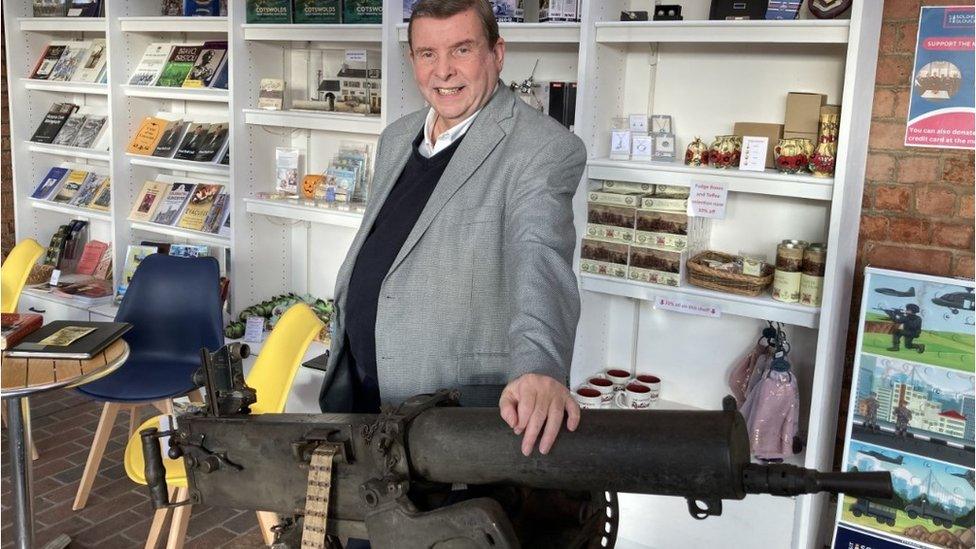
Len Evans, director of the Soldiers of Gloucestershire Museum, stands by a Maxim machine gun similar to the one in the photo
Some individuals in the photograph have already been identified.
Second row down, third from left is 200918 Private Edwin Vickerage, who survived to be 100 years old.
200542 Private Harold Beck, the Lewis gunner, is lying down with his legs under the machine gun.
"There's a fellow right in the middle behind the machine gun. He's obviously of African heritage," pointed out Mr Chard.
"One must assume he's a Bristolian.
"He's just gone through the hell of the fighting alongside his comrades and is standing there as an equal; something we generally don't expect to find in a territorial battalion of the First World War. It would be lovely to know who he was."
'A snapshot'
The 1916 date on the plaque in the photo places it firmly during the Battle of the Somme.
During the long campaign, more than 250,000 men were killed on the British side alone.
The D Company, 1/4th Battalion, The Gloucestershire Regiment, participated in the assault on the French village of Ovillers between 15 and 18 July.
Only 77 soldiers out of about 200 were still alive when the battalion withdrew from the front line to a nearby village after severe fighting and they were pictured in a moment in time, showing off the German trophies they came by after the skirmish.
"As you can see in the photograph, there is actually a Maxim machine gun. Others have got swords, and even helmets they acquired from German officers. Some would have been brought home and many would actually have been traded by the soldiers.
"They're just having fun after a very difficult time," said Mr Evans.
"It's a snapshot of these fellows after the horror of what they've just gone through," added Mr Chard.
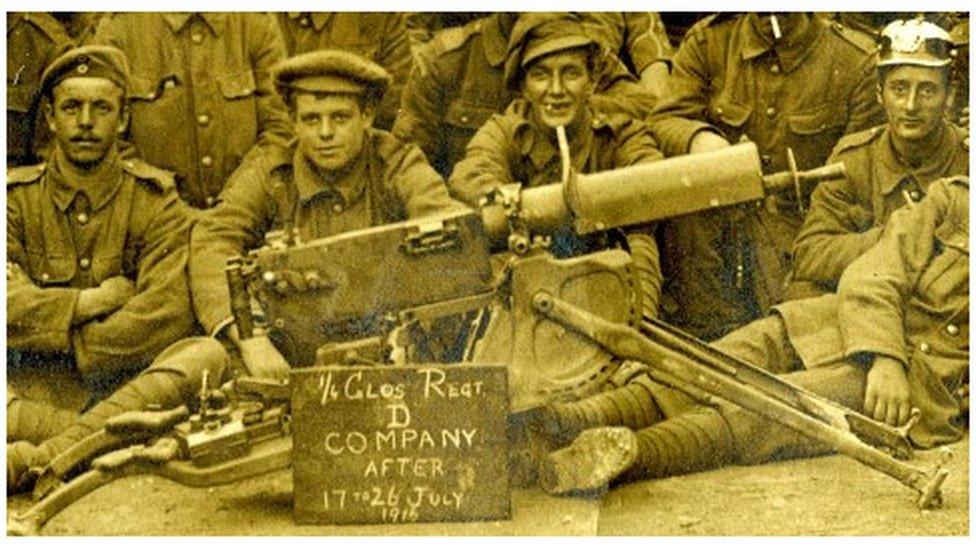
The soldiers were photographed showing their war trophies such as this German Maxim machine gun
Better understanding
The Gloucestershire Regiment, commonly referred to as the Glosters, was a line infantry regiment of the British Army from 1881 until 1994.
At its formation the regiment comprised two regular, two militia and two volunteer battalions, and saw its first action during the Second Boer War.
Sixteen battalions of the regiment saw active service in during World War One, losing a total of 8,100 men.
Shortly after celebrating its tercentenary in 1994, the regiment was merged with the former Duke of Edinburgh's Royal Regiment to form the Royal Gloucestershire, Berkshire and Wiltshire Regiment, which then also merged in 2007 to become The Rifles.
"It's vital to remember the sacrifices they made," said Mr Chard.
"It would add a great deal to the understanding of the battalion and how the Territorial Army worked at the time," he concluded.
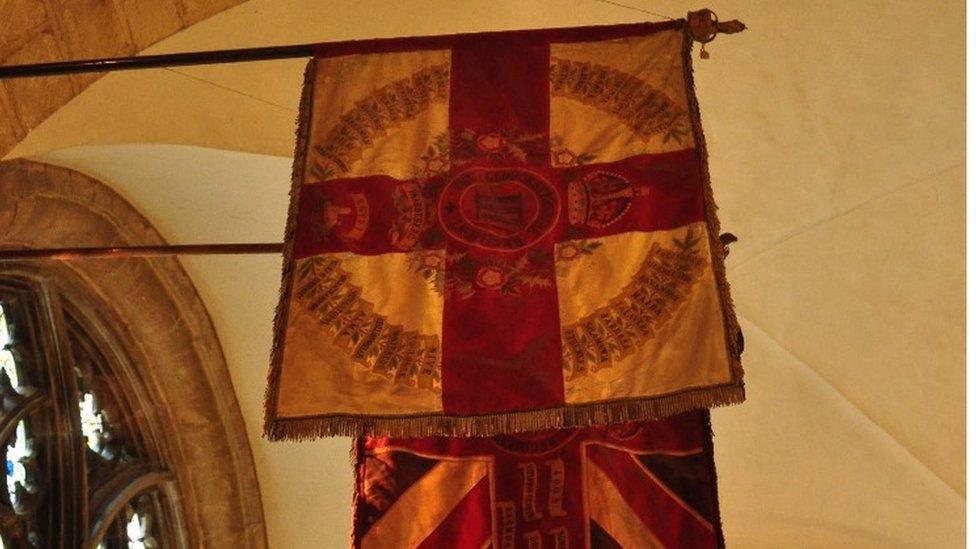
The regimental colours in Gloucester Cathedral

Follow BBC West on Facebook, external, Twitter, external and Instagram, external. Send your story ideas to: bristol@bbc.co.uk , external
- Published2 January 2024
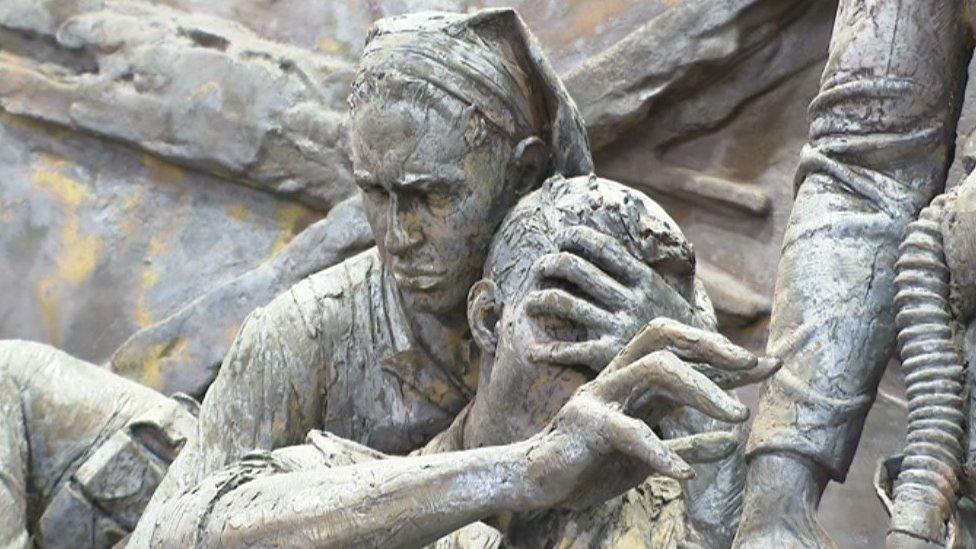
- Published18 November 2023
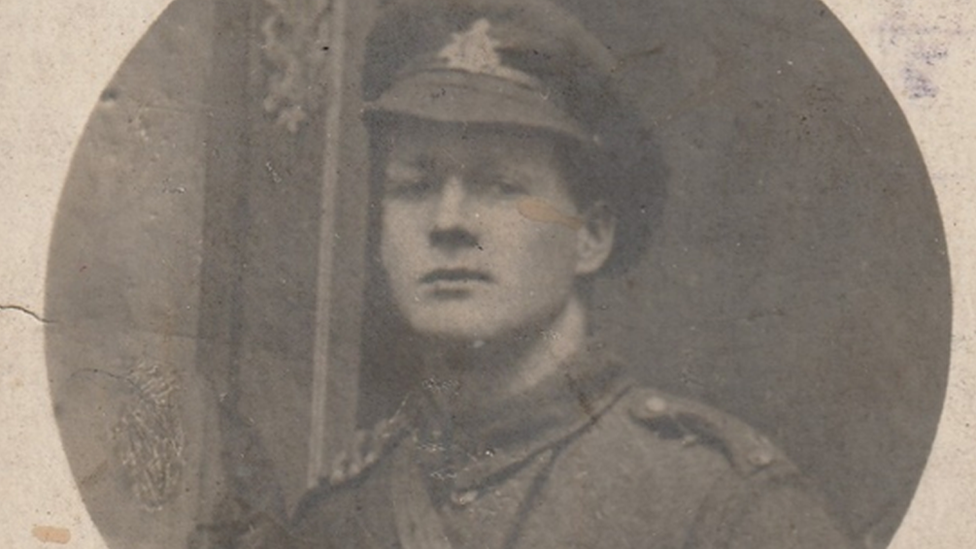
- Published5 September 2023
